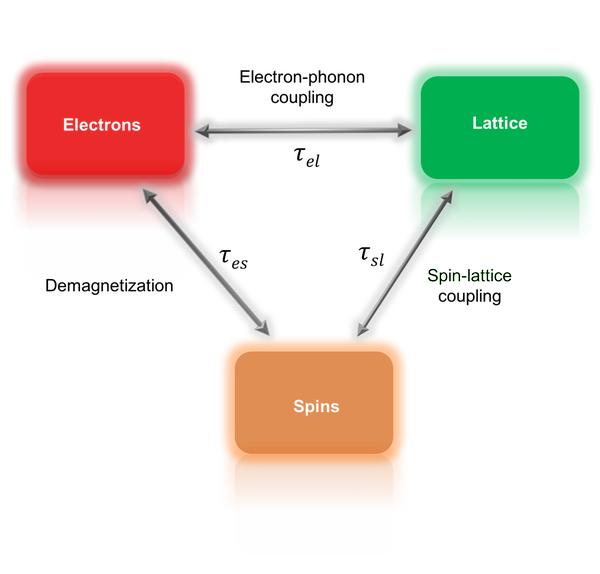Ultrafast magnetization

Ultrafast magnetization

Ultrafast magnetization dynamics
Ultrashort laser pulses can change the magnetization in a material within femtoseconds. The mechanisms that are involved in this demagnetization process have been studied for two decades, since its first observation, but are still under debate. To understand this phenomenon it is necessary to investigate the interactions between the lattice, electron, and spin systems as illustrated by the top figure. Today, two applications in this field that have gained a lot of attention are all-optical-switching and ultrafast generation of spin currents. In general, the investigation of ultrafast magnetization dynamics requires a probe that has femtosecond time resolution. At Helios we use ultra short XUV pulses as the probe, since the high photon energies provide us with elementally resolved information about the magnetization dynamics. This enables us to study how different magnetic components in a compound react to the demagnetizing laser pulse, as well as their subsequent interaction with each other. We use this method to study layered magnetic structures, transition metal oxides, and alloys (ordered and disordered), where we in all cases are interested in studying materials that benefit from the elemental specificity of our source.
T-Moke using XUV
Linearly polarized (p-polarized) light that is reflected by a magnetic sample, changes its reflectivity when the sample magnetization changes. The effect is particularly strong near absorption edges of magnetic elements (changes as large as 50% can be observed). XUV provides the possibility to measure the reflectivity at a specific absorption edge, resulting in elemental specificity. Unlike other magneto-optical Kerr effects, the transverse magneto-optical Kerr effect (T-Moke) has the advantage that no polarization analysis (which is difficult in the XUV regime) is necessary, only the reflected intensity is measured. Furthermore, we are currently investigating the use of circularly polarized XUV pulses for XMCD transmission measurements.
People
- Ronny Knut
- Robert Stefanuik
- Rameez Saeed Malik
- Olof Karis
Selected papers:
A setup for element specific magnetization dynamics using the transverse magneto-optic Kerr effect in the energy range of 30-72 eV
Review of Scientific Instruments 88 (3), 033113
Contact
- Programme Professor Condensed Matter Physics of Energy Materials
- Håkan Rensmo
- Head of Division X-ray Photon Sciences
- Nicusor Timneanu
